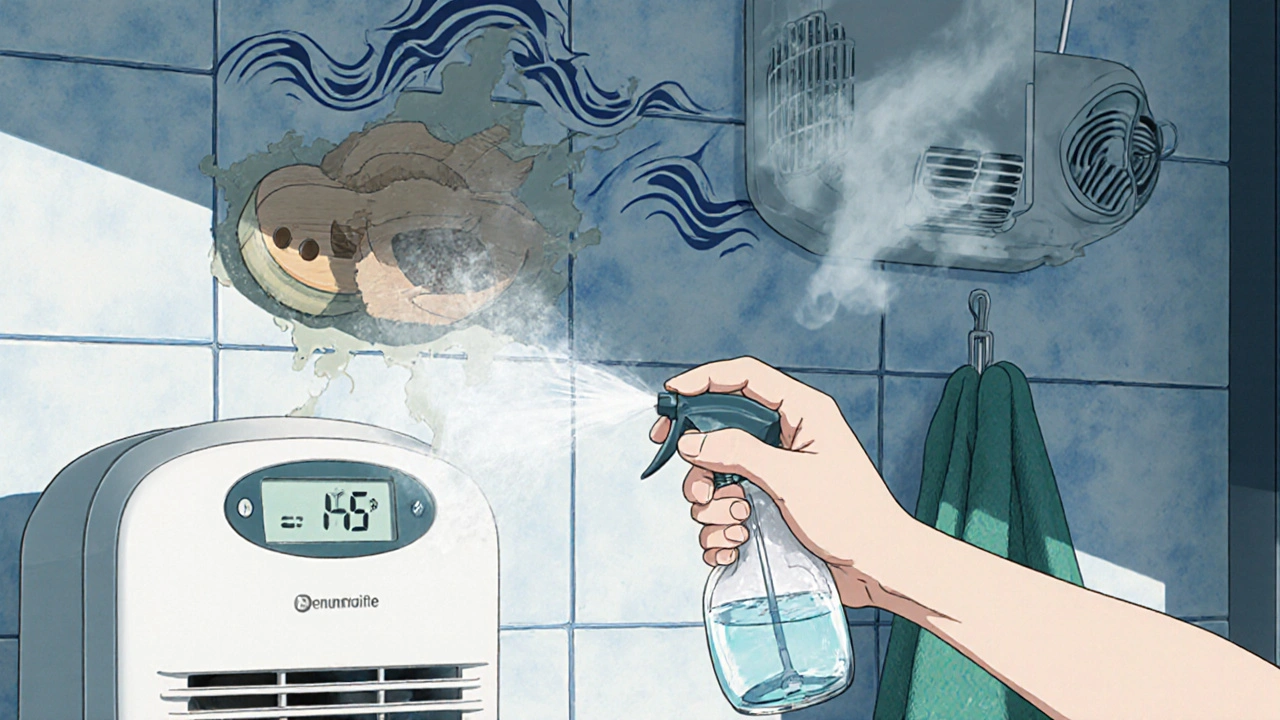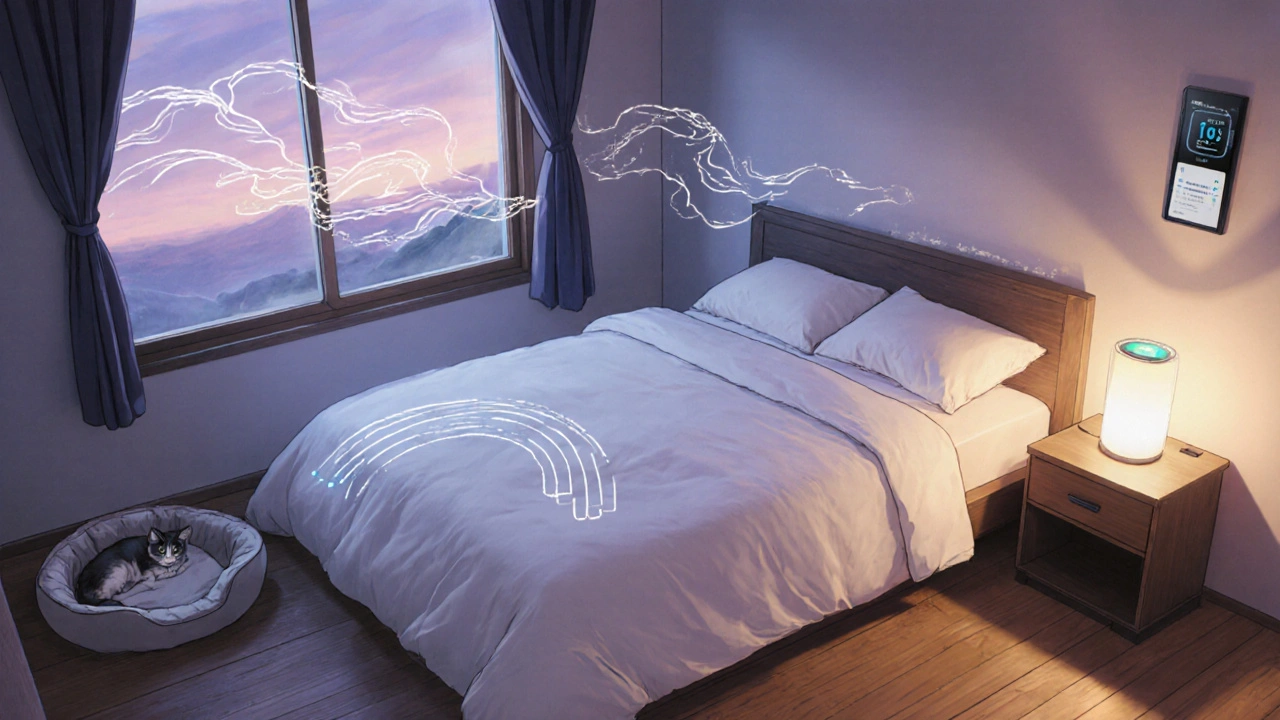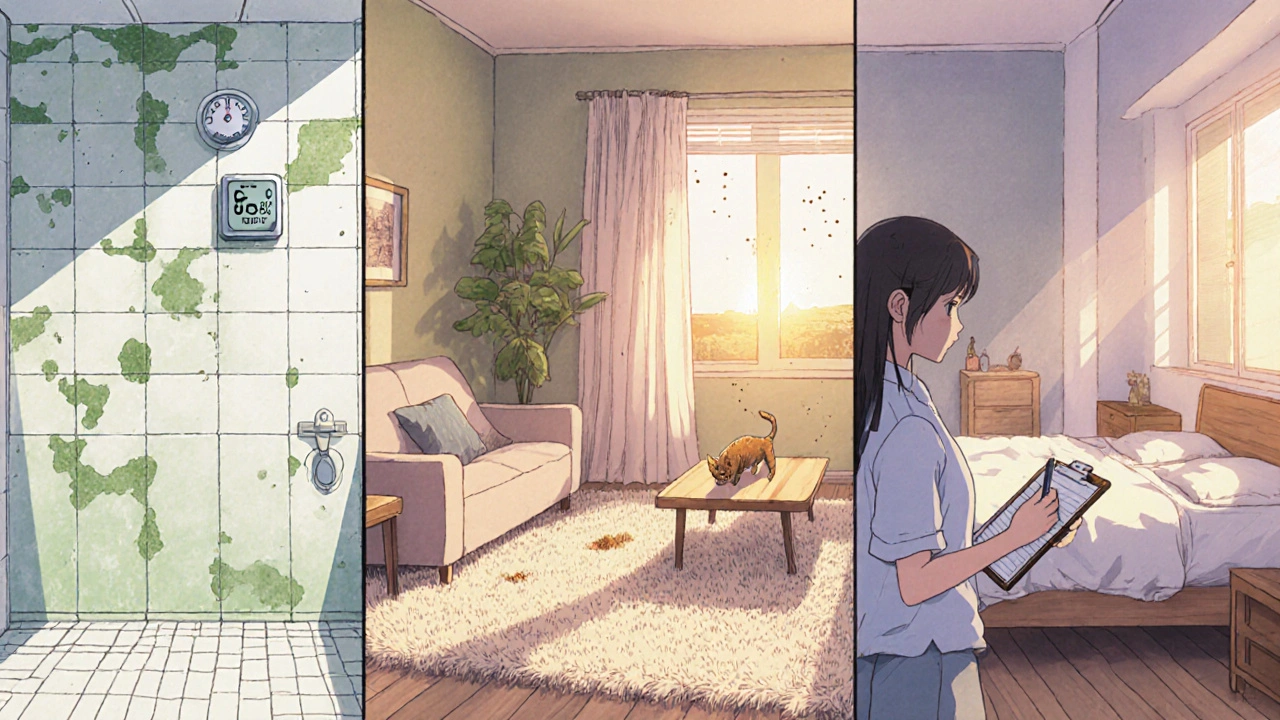Humidity Control Calculator
Check Your Humidity Level
Why This Matters
Maintaining humidity between 30-50% is critical for asthma management. Below 30% can dry out airways, while above 50% encourages mold growth and dust mites.
Creating a asthma‑friendly home is a living space designed to minimize triggers that can provoke asthma attacks, such as dust, mold, and indoor pollutants involves more than just occasional cleaning. It means shaping the whole indoor environment so that the air you breathe stays clean, humidity stays balanced, and common allergens stay out of reach.
Why Indoor Air Quality Matters for Asthma
Good indoor air quality (IAQ) isn’t a luxury; it’s a medical necessity for anyone prone to asthma. Research from the Australian Institute of Health and Welfare shows that poor IAQ can increase the frequency of asthma exacerbations by up to 30 % in children. When the air carries tiny particles-like pollen, dust mite debris, or volatile organic compounds (VOCs)-the airways tighten, leading to coughing, wheezing, and sometimes a full‑blown attack.
Step 1 - Identify the Biggest Triggers in Your House
- Mold and moisture: Often hides behind walls, under sinks, or in bathrooms.
- Dust mites: Thrive in carpet, upholstered furniture, and bedding.
- Pet dander: Skin flakes that float in the air whenever a pet moves.
- VOCs: Emitted by paints, cleaning agents, and new furniture.
- Smoke: From cigarettes, cooking, or fireplaces.
Walk through each room with a notebook. Jot down where you see visible mold, note the presence of carpet, and record the number of pets. This simple audit tells you exactly where to focus your effort.
Step 2 - Tame Moisture Before Mold Gets a Footing
Mold loves humidity above 60 %. A digital hygrometer is inexpensive (often under $20) and gives a real‑time readout. Keep humidity between 30‑50 % using these methods:
- Run exhaust fans while showering or cooking.
- Invest in a dehumidifier for basements and bathrooms.
- Fix any leaks in roofs, pipes, or windows immediately.
- Use moisture‑absorbing products like silica gel packets in closets.
If you spot mold already growing, wear a mask, scrub with a 1‑part bleach to 3‑part water solution, and discard porous items that can’t be fully cleaned (e.g., ceiling tiles).
Step 3 - Kick Dust Mites Out of Your Bedding and Furniture
Dust mites feed on dead skin cells, so the cleaner the bedroom, the fewer they proliferate.
- Wash sheets, pillowcases, and blankets weekly in water hotter than 130 °F (54 °C).
- Encase mattresses and pillows in allergen‑proof covers-look for a rating of 0.1 µm or less.
- Swap wall‑to‑wall carpets for hard‑floor surfaces where possible. If you keep carpet, vacuum twice a week with a HEPA‑rated vacuum.
- Reduce clutter that collects dust, such as stuffed toys and heavy drapes.

Step 4 - Manage Pet Dander Without Saying Goodbye to Your Furry Friends
Pets are part of the family, so you don’t need to get rid of them. Instead, control the dander that floats around.
- Bathe cats and dogs weekly with a pet‑friendly, low‑pH shampoo.
- Brush them outdoors to keep loose hair from entering the house.
- Keep pet beds and toys in a designated, easy‑to‑clean area.
- Consider an air purifier in rooms where pets spend most of their time.
Step 5 - Choose Low‑Emission Cleaning Products
Many conventional cleaners release VOCs that irritate the lungs. Look for products labeled “low‑VOC,” “fragrance‑free,” or “green certified.” You can also make your own safe solutions with white vinegar, baking soda, and a few drops of tea tree oil (which has natural antimicrobial properties).
Step 6 - Upgrade Ventilation and Filtration
Fresh air dilutes indoor pollutants, while filters capture particles that already exist. Here’s how to get the most out of both.
Ventilation Tips
- Open windows for 10‑15 minutes each morning, especially after cooking.
- Install a heat‑recovery ventilator (HRV) if you live in a climate where you need to keep heating or cooling on.
- Make sure air‑conditioning filters are replaced every 1‑3 months.
Choosing the Right Air Purifier
Not all purifiers are created equal. Below is a quick comparison of the three most common technologies.
| Technology | What It Captures | Typical Cost (AU$) | Maintenance Frequency |
|---|---|---|---|
| HEPA Filter | 99.97 % of particles ≥0.3 µm (dust, pollen, mold spores) | 200‑400 | Replace filter every 6‑12 months |
| Activated‑Carbon | Gases and odors (VOCs, smoke) | 150‑350 | Replace carbon block every 3‑6 months |
| Ionic Cleaner | Charges particles to stick to collector plates | 100‑250 | Clean plates weekly; filter lifespan varies |
For most asthma‑prone households, a combo unit that pairs HEPA with activated carbon offers the best all‑around protection.

Step 7 - Keep an Eye on Real‑Time Air Quality
Smart air‑quality monitors (like the Awair or the Foobot) measure particulate matter (PM2.5), CO₂, temperature, and humidity. Place one in the living room and another in the bedroom; the devices send alerts to your phone when levels spike, prompting you to ventilate or run the purifier.
Quick Checklist for an Asthma‑Friendly Home
- Measure humidity; keep it 30‑50 %.
- Use allergen‑proof mattress & pillow covers.
- Vacuum with a HEPA‑rated machine twice a week.
- Replace AC/heat filters every 1‑3 months.
- Run an air purifier with HEPA + carbon in high‑traffic rooms.
- Choose low‑VOC cleaning supplies.
- Bathe pets weekly; keep pet areas confined.
- Install exhaust fans in kitchen and bathrooms.
- Set up a digital hygrometer and fix any leaks immediately.
Frequently Asked Questions
Can I rely on an air purifier alone to stop asthma attacks?
An air purifier is a powerful tool, but it works best alongside other measures like humidity control, regular cleaning, and avoiding trigger‑rich products. Think of it as one layer in a multi‑layer defense.
How often should I replace a HEPA filter?
Most manufacturers recommend 6‑12 months for residential units, but if you have pets or live in a dusty area, check the pressure drop-when airflow noticeably slows, it’s time for a change.
Is baking soda an effective mold remover?
Baking soda can help scrub surface mold, but it won’t kill deep‑rooted colonies. For porous surfaces, removal and replacement is safer. Always follow up with a bleach solution for non‑porous areas.
Do allergen‑proof mattress covers need to be washed?
Yes-wash them every 3‑6 months in hot water to keep dust mites from building up behind the cover.
What’s the best humidity level for asthma sufferers?
A range of 30‑50 % is ideal. Below 30 % can dry out airways, while above 50 % encourages mold and dust mites.
By following these steps, you can transform any house into a asthma‑friendly home that lets you breathe easier, sleep soundly, and enjoy daily life without constantly watching the ceiling for the next wheeze.






Hey there, great start on thinking about an asthma‑friendly home let’s keep it simple and practical follow these steps one at a time and you’ll see the air improve
Within the walls of our dwellings lies a silent covenant between breath and space a pact that, when honored, shields the vulnerable lungs from the unseen siege of allergens; consider each room as a temple where humidity is a deity to be appeased and dust a lingering specter to be exorcised.
Yo the gov ain’t telling ya that most cheap air purifiers are rigged with hidden emitters that actually pump more VOCs into your living room so ditch the brand hype grab a DIY HEPA filter made from old coffee filters and you’ll be breathing cleaner air for sure
I noticed that many people overlook the importance of checking the humidity level especially in the basement where mold loves to hide; a cheap hygrometer can pinpoint problem spots and guide you to use a dehumidifier before mold takes hold.
First, understand that asthma triggers are not random but follow predictable patterns linked to environmental conditions. Second, the presence of dust mites correlates directly with humidity levels above thirty percent, which means your hygrometer readings are a primary diagnostic tool. Third, investing in allergen‑proof encasements for mattresses and pillows reduces mite exposure by up to ninety percent according to peer‑reviewed studies. Fourth, regular laundering of bedding at temperatures above fifty‑four degrees Celsius is essential to kill residual allergens that survive cooler washes. Fifth, while many assume that hardwood floors are the ultimate solution, low‑pile carpets paired with a HEPA‑rated vacuum can achieve comparable results without the cost of full floor replacement. Sixth, the myth that indoor plants always improve air quality is debunked; certain species release spores that may exacerbate symptoms. Seventh, when selecting cleaning agents, prioritize products labeled low‑VOC and fragrance‑free, because volatile organic compounds are invisible irritants that can trigger bronchoconstriction. Eighth, air purifiers that combine HEPA and activated carbon filters provide the most comprehensive filtration, capturing both particulate matter and gaseous pollutants. Ninth, remember to replace filters on a schedule dictated by usage intensity; neglecting this maintenance renders the device ineffective. Tenth, the placement of air monitors in both the bedroom and living room offers real‑time data that can inform immediate actions such as opening windows or increasing purifier speed. Eleventh, sealing cracks around windows and doors prevents outdoor pollen from infiltrating the indoor environment during high‑pollen seasons. Twelfth, pet dander control is best achieved by regular bathing and grooming outdoors, coupled with designated pet zones that are easy to clean. Thirteenth, if you notice a persistent musty odor, it is a hallmark of hidden mold that warrants professional remediation rather than superficial cleaning. Fourteenth, the use of silica gel packets in closets is a low‑cost method to absorb excess moisture that could otherwise foster mold growth. Fifteenth, finally, cultivating a routine of weekly inspections-checking for water stains, testing humidity, and reviewing filter status-creates a proactive defense that keeps asthma attacks at bay.
Great tips
While the checklist provides a solid foundation, it is imperative, however, to recognize that not all households will benefit equally from a generic approach; for instance, homes located in arid climates may require additional humidification, whereas those in humid regions must prioritize dehumidification, and the choice of air purifier should be calibrated to the specific square footage and occupancy rate, otherwise the investment may fall short of its intended efficacy.
Honestly, most of these tips feel like common sense wrapped in flashy language, and if you already vacuum twice a week you’re probably fine.
Oh dear, the whole “air‑purifier‑is‑the‑hero” narrative is just another market‑driven fable; the real battle is fought in the silent trenches of micro‑climate control where humidity, ventilation, and socio‑economic factors intertwine, rendering any single device a mere decorative token in the grand theatre of respiratory health.
Let’s charge ahead, folks! Every small change you make-be it swapping a carpet for hardwood, sealing that leaky faucet, or adding a sleek HEPA unit-adds up to a powerhouse of protection that will keep your lungs dancing free.